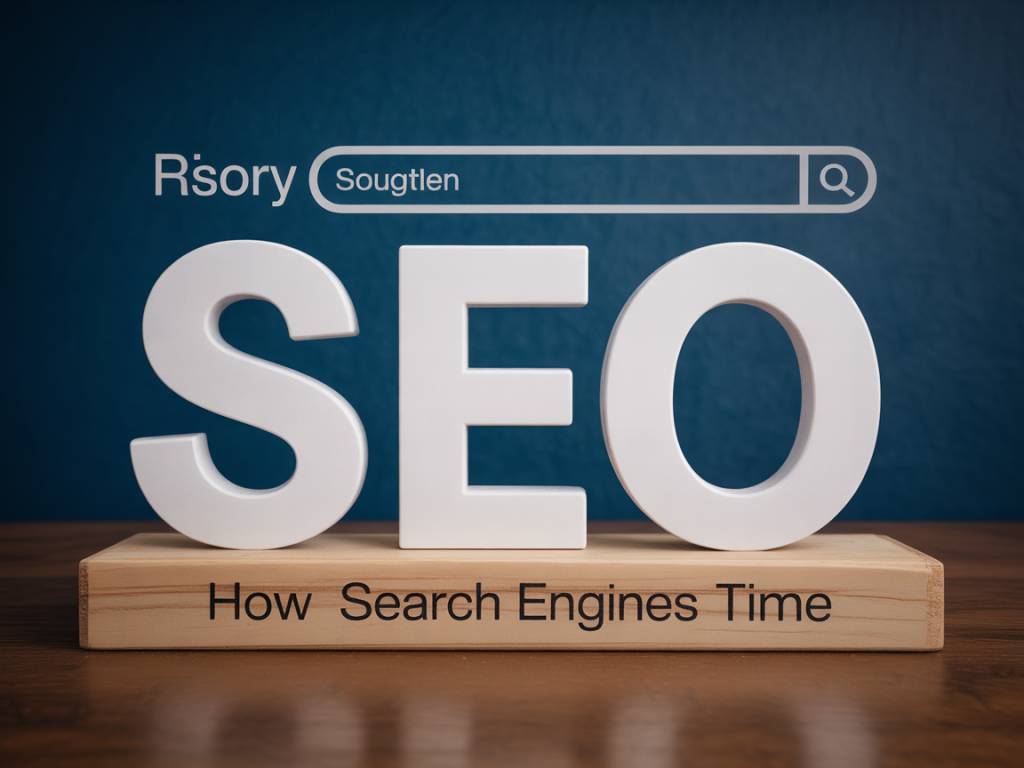The history of seo and how search engines have changed over time

The history of seo and how search engines have changed over time
From Backlinks to BERT: How SEO and Search Engines Have Evolved
SEO didn’t start with algorithms, rank-tracking tools, or long-tail keyword research. In the early days, it was closer to the Wild West—open, chaotic, and largely unregulated. As someone who’s lived through the evolution of SEO for over a decade, trust me: the only constant in this field is change. Understanding where SEO came from—and how search engines have adapted—is critical if you’re serious about staying ahead of the curve.
The Early Days: Metadata and Keyword Stuffing (1990s)
Back when Yahoo! and AltaVista reigned supreme, SEO was as simple as cramming your main keyword into every possible on-page element. Page titles? Keyword. Meta description? Keyword. Background color set to white? Let’s hide some more keywords there too.
Search engines back then relied heavily on meta tags and visible text. The algorithmic sophistication we take for granted today didn’t exist. There was little to no penalty for over-optimization. Whoever said “content is king” hadn’t met HTML keyword spam.
Here’s how basic it was:
- Page A says « cheap flights » 100 times? Top of the rankings.
- Page B doesn’t have any keywords, but is genuinely helpful? Good luck showing up in SERPs.
And yet, SEO worked. Because the search engines were still learning how to separate relevance from manipulation.
Google Arrives, Brings PageRank to the Party (Late 1990s – Early 2000s)
Then came Larry and Sergey. In 1998, Google introduced something radical: a way to measure the credibility of a page based on who was linking to it. PageRank turned the tide from mere on-page keyword games to link-based reputation building.
This was a big moment. Suddenly, getting backlinks mattered more than just stuffing keywords. The SEO community adapted (some faster than others), and link building entered the spotlight—eventually becoming the foundation of most off-page SEO strategies.
But loopholes remained. And oh boy, did people exploit them:
- Private blog networks (PBNs)
- Comment spamming
- Link farms
- Buying expired domains just for the backlinks
If you could manipulate the link graph, you could game the rankings. Until Google began cracking the whip.
The Age of Updates: Penguin, Panda, and the Algorithmic Crackdown (2010s)
The 2010s can be defined in two words: algorithm updates.
This was the decade Google finally said “enough.” Its mission to deliver quality search results triggered a series of updates that shook the SEO world to its core—and ruined a lot of shady agencies overnight.
- Panda (2011): Penalized thin, low-quality, or duplicate content.
- Penguin (2012): Hammered unnatural link profiles and shady link schemes.
- Hummingbird (2013): Focused on searcher intent rather than exact keywords.
Suddenly, context started to matter more than keyword density, and backlinks were judged for quality—not just quantity.
If you were doing SEO based on checklists and loopholes, this was the great reckoning. If you focused on value, structure, and purposeful content, you probably thrived.
User Experience Becomes a Ranking Factor
Around mid-2010s, you may have noticed something if you were tracking rankings closely: pages with clean UX, fast load times, and mobile compatibility started winning SERPs.
Coincidence? Not at all. Google began factoring user signals—and overall experience—into its rankings:
- Mobile-friendliness (Mobilegeddon, 2015)
- HTTPS as a ranking signal (2014)
- Page Speed (2018 onward)
- Core Web Vitals (2021)
This was the shift from search engines optimizing for machines, to optimizing for people. UX and SEO became two sides of the same coin. You couldn’t just optimize for the crawlbot—you had to optimize for the human reading your content.
The Rise of Semantic Search and AI (Late 2010s – 2020s)
Enter semantic search. Rather than matching keywords, search engines got smarter about understanding what users actually meant.
Key milestones:
- RankBrain (2015): Google’s first AI system, helping it interpret queries never seen before.
- BERT (2019): Contextual understanding of natural language, especially for longer queries.
- MUM (2021): Even more powerful multi-modal understanding that aims to answer complex queries involving text, images, and languages.
The practical impact for SEO? You can’t rely solely on exact match keywords. Google now tries to understand synonyms, intent, and context. If your content skips around the topic or blindly repeats a phrase, it’s less likely to rank today than it was 10 years ago.
Content depth, coherence, topical authority—these became real ranking factors. Not because Google said so, but because that’s what its algorithms started rewarding.
Zero-Click Searches and SERP Features: The New Battleground
Rank #1 isn’t always top of the page anymore. Today’s SERPs are filled with:
- Featured Snippets
- People Also Ask boxes
- Knowledge Panels
- Local Packs
- Video Carousels
These introduce a new problem: zero-click searches. According to studies, nearly 65% of all searches now end without a click. Users get their answer straight from the SERP, never visiting a site.
So where do SEOs add value?
- Structuring content for featured snippets using FAQ or how-to schemas
- Creating video content that appears in carousels on transactional queries
- Owning branded searches with Knowledge Panels and structured data
Snagging SERP features has become a legitimate branch of SEO in itself. Visibility isn’t just about position—it’s about presence.
Voice Search, Mobile-First, and the Intent Economy
With mobile becoming dominant and smart speakers entering the mainstream, search behavior changed again. Users no longer “type” queries—they ask.
That means:
- Queries became longer and more conversational (“What’s the best SEO tool for beginners?”)
- Local intent increased (“near me” searches exploded)
- Featured snippets and structured answers saw even more value
If you’re not thinking about how your content answers a real spoken question, you’re already behind. The better your content fits real-world queries, the more Google trusts it to serve those « micro-moments » of intent.
So Where Are We Headed?
Looking forward, SEO is becoming less about hacking the algorithm and more about building a strong brand presence. You can’t cheat your way to credibility. Algorithms now evaluate:
- Authoritativeness (E-E-A-T)
- Engagement signals (CTR, dwell time, bounce rate)
- Topical depth and interlinking
And with generative AI entering the chat (hello Bard, ChatGPT in Bing Search, etc.), the SERP will continue to evolve—faster than most marketers are ready for.
The core fundamentals haven’t changed: deliver value, answer searcher intent, structure your site correctly, and earn your backlinks. But the bar for « quality » content is higher than ever.
Final Thoughts
When I think about the past 20 years of SEO, it’s a story of progressive alignment between what users want and what search engines reward. The shortcuts dried up. The cheap tricks withered. What survives? A strategy built on genuine usefulness, technical rigor, and content that answers real questions.
SEO isn’t dead—it just grew up. And if you’re serious about it, so should your tactics.








